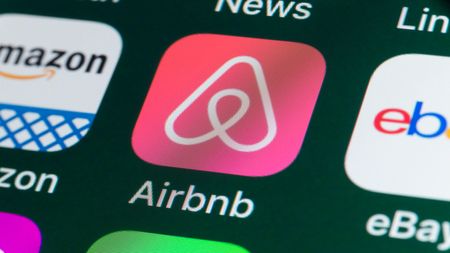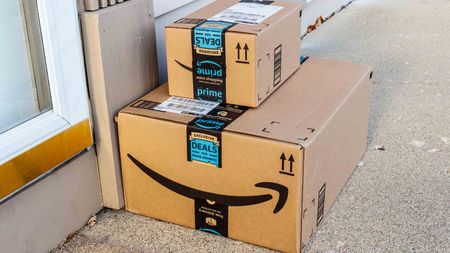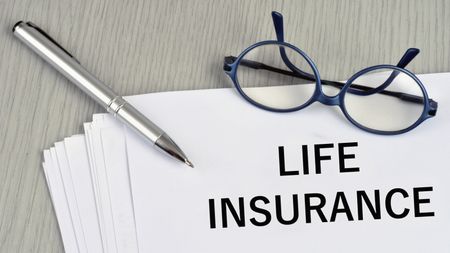Best Values in Private Colleges 2010-2011
Our top 200 schools deliver a high-quality education at an affordable price.

Incensed at the price of a private-college education? On the face of it, you have every reason to be.
The average cost of a year at a four-year private school has lately run about $36,000, compared with $21,000 a decade ago, according to the College Board. Over the same ten-year period, family incomes have mostly stagnated. Many parents wonder whether a private-school education is attainable at all, much less worth the price.
Don't grab the pitchforks yet, folks. Although the sticker price charged by private colleges may seem more suited to the Ancien Régime than to recession-weary families, the net price -- the cost after financial aid -- puts the total out-of-pocket cost, on average, closer to $22,000. And if you consider only tuition and fees, the net price (in inflation-adjusted dollars) is actually a bit less than it was a decade ago.

Sign up for Kiplinger’s Free E-Newsletters
Profit and prosper with the best of expert advice on investing, taxes, retirement, personal finance and more - straight to your e-mail.
Profit and prosper with the best of expert advice - straight to your e-mail.
What's more, the colleges currently offering a net price below $20,000 include some of the best institutions in the world, making them a downright bargain -- and putting them at the top of Kiplinger's 2010-11 rankings for best values in private colleges and universities. Princeton, Kiplinger's number-one-ranked university, reduces its $49,780 price to a bargain-basement $16,352, on average, for students with need. [See our slide show for a look at the Top 10 Values in Private Universities and our full list of the top 100 private universities.]
Swarthmore, a repeat winner in our liberal-arts category, provides a first-class education to qualified Swatties for $18,791, nearly two-thirds off its $52,650 sticker price. [See our slide show for a look at the Top 10 Values in Liberal-Arts Colleges and our full list of the top 100 liberal-arts schools.] Most private colleges devote the lion's share of their resources to students who qualify for need-based aid, and some elite schools have eliminated non-need-based aid entirely. Still, several Ivy League schools, including Yale and Harvard, define need liberally, offering aid to families earning $180,000 or more. A few wealthy, highly selective institutions, including Davidson College, in Davidson, N.C., offer merit scholarships to 20% or more of their students. Less-competitive colleges spread merit aid more widely to attract strong students who can pay some, if not all, of the costs.
As for sticker prices, expect them to continue rising, but at a slower pace than earlier in the decade. The hike for 2010-11 -- about 4.5% -- was relatively modest, thanks to cost-cutting initiated during the recession, says David Warren, president of the National Association of Independent Colleges and Universities. "While the crisis has lessened, it has not disappeared. It's on the mind of every college president to hold down that rate of increase."
Quality comes first
Ever met parents who dream of sending their child to a mediocre college just because it's cheap? Neither have we. To determine our best values, we start with indicators of high quality, such as small class size, a high-achieving incoming class, a satisfied clientele (measured by how many students return after freshman year) and graduation rates that reflect the school's ability to deliver its education -- and a degree -- within four or five years.
Once we've assembled our "A" team, we reshuffle the lineup based on affordability, including the average amount of financial aid each college bestows, the extent to which students have to borrow and the cost for families who pay full price. (For more on our criteria, see How We Rank the Schools.) Because liberal-arts colleges focus on undergraduates and universities include graduate students, we divide the schools into two categories, each 100 schools strong.
This year's standouts? Besides Princeton, the star players on the universities side include Yale, ranked second for its impeccable academics and lavish need-based aid; Caltech, ranked third for similarly superlative features plus a student-faculty ratio of three to one; and Rice (number 4), whose $46,321 total annual cost represents the lowest sticker price among our top 25 universities. (For a closer look at Rice, see Small School, Big Ambitions.)
Swarthmore, near Philadelphia, returns to our number-one spot on the liberal-arts side after a two-year hiatus. It bests Pomona College (number 2), in Claremont, Cal., and Williams College (number 3), in Williamstown, Mass., mostly for the generous merit scholarships it offers to a handful of undergrads. Each of these elite schools boasts accomplished students, small classes and strong graduation rates; each also meets the full need of qualified students and offers average need-based aid that exceeds $30,000 a year.
For more great deals, check out the Claremont Colleges, five small liberal-arts colleges -- Claremont McKenna, Harvey Mudd, Pitzer and Scripps, along with Pomona -- on adjoining campuses about 30 miles east of Los Angeles. Students who enroll in one of the colleges can take classes at any of the others, an approach that other colleges have lately adopted in an effort to share resources and restrain costs. Claremont Colleges stand on their own when it comes to value, however. Each appears on this year’s rankings.
Keeping down debt
Imagine that your child has been accepted by Princeton but has to say no because you can't afford the tuition. Then imagine that your child does enroll and ends up with massive amounts of debt for the sake of that Ivy League degree.
Neither scenario is likely (assuming your kid is talented enough to be accepted in the first place). Princeton not only meets the full need of qualified students but also puts families with six-figure-plus incomes in its financial-aid pool. In this year's entering class, families with incomes of $160,000 to $180,000 qualified for an average grant of $26,450.
Note the absence of the word loan from the previous sentence. Princeton was the first university, in 2001, to eliminate student loans from its financial-aid package. "Leading up to 2001, we had been reducing and eliminating loans for low- and middle-income students," says Robin Moscato, director of financial aid. After Princeton removed loans from the mix, "the economic diversity in the undergrad population increased dramatically."
No matter what their family income, students who qualify for aid benefit from Princeton's no-loan policy. Since 2001, the average debt upon graduation has dropped to less than $5,000, the lowest on both our lists. (Some families borrow to cover their share of the costs.) With little or no debt to worry about, Princeton alums have the freedom to enter a low-paying profession or enroll in grad school. Says Moscato, "They can make choices as to what to do next."
Princeton was flush when it made its no-loan commitment, as were other schools that did the same, including Columbia, Dartmouth and Vanderbilt on the universities side and Davidson, Haverford, Pomona, Swarthmore and Williams among liberal-arts colleges. The recession hit endowments like a poleax, forcing Williams and Dartmouth to reinstate loans in financial-aid packages for higher-income families. So far, Princeton and the others have managed to keep their loan-free pledge. "It's a core priority for the university," says Moscato.
Nurturing bright ideas
When Swarthmore last headed our liberal-arts list, in April 2008, this small, top-tier institution was sitting pretty. Perched on a hill amid a rolling, wooded campus just outside of Philadelphia, Swarthmore attracted some of the best students in the country and covered the costs of all those who qualified for financial aid. The school had recently announced that it would replace loans with grants and committed $1.7 million of its $1.4-billion endowment to the effort.
Several years and one brutal recession later, Swarthmore still boasts top academics, high-caliber students and a generous financial-aid policy, but it has millions of dollars less to work with. The investment return on Swarthmore's endowment sank almost 17% from its pre-recession peak before recovering somewhat in 2009 and 2010. Meanwhile, financial-aid expenses rose by 12.5%.
To address the budget crunch, Swarthmore froze salaries, cut departmental expenses, dipped into its reserve fund, and asked alums and other donors to pitch in. That effort paid off. Swarthmore continues to accept and meet the needs of all qualified students and has kept this year’s tuition increase to 3.8%. "We have long had a deep commitment to access and to the need-blind process," says Swarthmore president Rebecca Chopp. "We're also trying to be very sensitive to the impact of cost on all families."
Last May, in its traditional graduation prank, the engineering majors attached working light bulbs to their mortarboards and had Chopp flip the "on" switch as she passed out each diploma. That exercise, however lighthearted, captured Swarthmore's zest for problem-solving and eagerness to meet the challenges of the 21st century, says Chopp. "We have an amazing amount of intellectual talent. If any school can figure it out, Swarthmore can."
Swarthmore doesn't accept every applicant, nor does every family have the same idea as to what constitutes the perfect fit. To assemble your list, dig deeper into the tables. You'll find a choice of schools that suit your circumstances, all of them great values.
Get Kiplinger Today newsletter — free
Profit and prosper with the best of Kiplinger's advice on investing, taxes, retirement, personal finance and much more. Delivered daily. Enter your email in the box and click Sign Me Up.

-
 RMD Deadline April 1: Five Tax Strategies to Manage Your 2025 Income
RMD Deadline April 1: Five Tax Strategies to Manage Your 2025 IncomeTaxable Income The April 1, 2025, deadline for required minimum distributions (RMDs) is fast approaching for retirees who turned 73 in 2024.
By Kelley R. Taylor Published
-
 Rising AI Demand Stokes Undersea Investments
Rising AI Demand Stokes Undersea InvestmentsThe Kiplinger Letter As demand soars for AI, there’s a need to transport huge amounts of data across oceans. Tech giants have big plans for new submarine cables, including the longest ever.
By John Miley Published
-
 Roth IRA Contribution Limits for 2025
Roth IRA Contribution Limits for 2025Roth IRAs Roth IRA contribution limits have gone up. Here's what you need to know.
By Jackie Stewart Last updated
-
 Four Tips for Renting Out Your Home on Airbnb
Four Tips for Renting Out Your Home on Airbnbreal estate Here's what you should know before listing your home on Airbnb.
By Miriam Cross Published
-
 Five Ways to a Cheap Last-Minute Vacation
Five Ways to a Cheap Last-Minute VacationTravel It is possible to pull off a cheap last-minute vacation. Here are some tips to make it happen.
By Vaishali Varu Last updated
-
 How to Figure Out How Much Life Insurance You Need
How to Figure Out How Much Life Insurance You Needinsurance Instead of relying on rules of thumb, you’re better off taking a systematic approach to figuring your life insurance needs.
By Kimberly Lankford Last updated
-
 Amazon Big Deal Days Is Coming! We’ve Got All the Details
Amazon Big Deal Days Is Coming! We’ve Got All the DetailsAmazon Prime To kick off the holiday season with a bang, Amazon Big Deal Days runs Tuesday, October 8 and Wednesday, October 9.
By Bob Niedt Last updated
-
 How to Shop for Life Insurance in 3 Easy Steps
How to Shop for Life Insurance in 3 Easy Stepsinsurance Shopping for life insurance? You may be able to estimate how much you need online, but that's just the start of your search.
By Kaitlin Pitsker Last updated
-
 Five Ways to Shop for a Low Mortgage Rate
Five Ways to Shop for a Low Mortgage RateBecoming a Homeowner Mortgage rates are high this year, but you can still find an affordable loan with these tips.
By Daniel Bortz Last updated
-
 Retirees, It's Not Too Late to Buy Life Insurance
Retirees, It's Not Too Late to Buy Life Insurancelife insurance Improvements in underwriting have made it easier to qualify for life insurance, which can be a useful estate-planning tool.
By David Rodeck Published